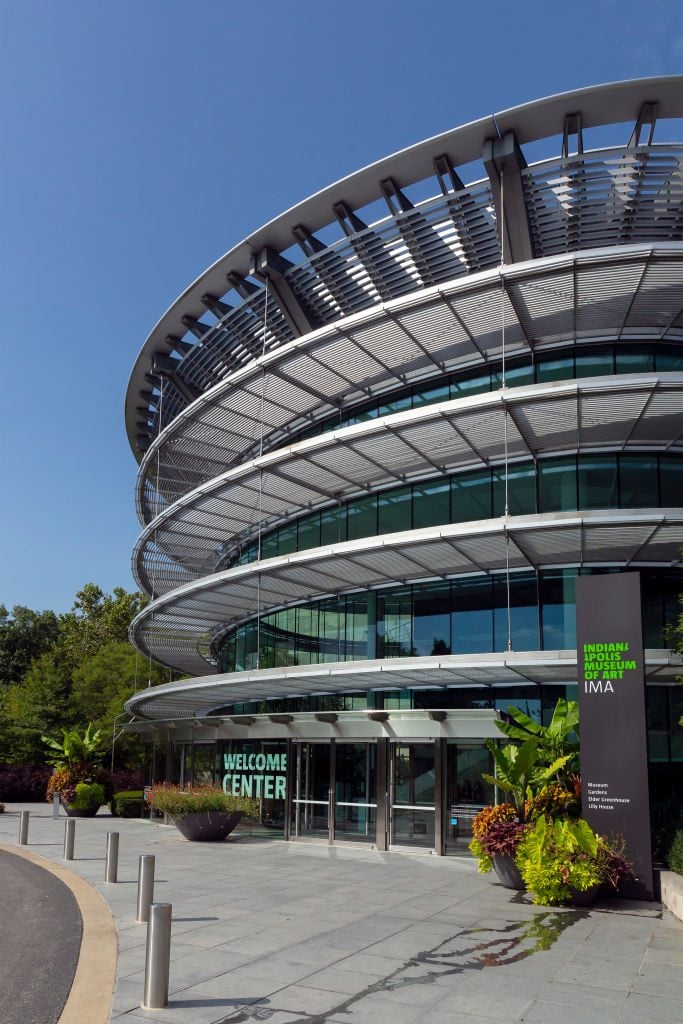Last month, the director and chief executive of the Indianapolis Museum of Art at Newfields, Charles Venable, resigned under pressure after the institution posted a racist job listing calling for candidates that would “attract a broader and more diverse audience while maintaining the museum’s traditional core, white art audience.”
In a letter announcing Venable’s move, the Newfields board of trustees vowed to change.
“We are sorry. We have made mistakes. We have let you down,” their statement began. “We are ashamed of Newfields’s leadership and of ourselves. We have ignored, excluded, and disappointed members of our community and staff. We pledge to do better.”
The board went on to promise a number of actions, including the delivery of a “detailed action plan” within 30 days.
Exactly 30 days later, on March 19, Newfields revealed that plan in the form of a 10-page document. It details a number of diversity, equity, inclusion, and access (DEIA) initiatives undertaken by the institution—each accompanied by a timeline for completion—including, most significantly, the creation of a $20 million endowment for diversifying the museum’s collection and programming.

Newfields director Charles Venable. Photo courtesy of Newfields.
But some who have worked at Newfields wonder whether the plan is enough to course correct what they describe as a toxic, discriminatory environment that extends far beyond one job listing.
“Honestly, it’s all fluff,” wrote Kelli Morgan, a former Newfields curator who resigned over the racism she said she experienced there, in an email to Artnet News. “Newfields leadership is responding with what they think they need to say to please the public.”
While formed in response to a specific incident, Newfields’s plan arrives at a time when museums across the country have faced increased scrutiny about their workplace cultures. A wave of institutions has instituted DEIA plans and hired specialists and corporate consultants in recent months, many under pressure in the wake of the murders of George Floyd and Breonna Taylor last spring.
Newfields, for its part, implemented formal DEIA initiatives in “late summer” 2020, according to a spokesperson, led by an outside consulting firm. (The museum did not answer a request to elaborate on when, specifically, those programs were put in place and what they looked like.)
Newfields underwent numerous changes during Venable’s nine-year term as director, including a major rebrand from the Indianapolis Museum of Art (IMA) to Newfields—a move that, for many, symbolized the institution’s evolution from a traditional museum to a newfangled multi-hyphenate venue for art, entertainment, and nature aimed at attracting a wider audience.

The Newfields campus. Image courtesy of Newfields.
Among the actions promised by Newfields’s plan are the implementation of mandatory DEIA training for all staff, docents, and volunteers with an “anti-racism lens”; the hiring of a diversity executive at the leadership level; the establishment of an advisory committee, which will act as liaison between museum administration and the local Indianapolis community; and an outside review of the institution’s leaders, culture, and policies. (Newfields says it is no longer working with m/Oppenheim, the recruiting platform on which February’s offensive job posting was listed.)
Perhaps the most significant of Newfields’s commitments is the creation of a $20 million endowment to “enhance representation in exhibitions and programming.” Money from the fund will be put exclusively toward the acquisition of art made by BIPOC artists and programming that furthers the museum’s DEIA goals.
“Over the last 30 days, we have been listening. We have been listening to our staff, our docents, volunteers, and members of the community, including local artists,” the introduction to the plan, penned by the board, read. “We recognize that racial bias and indifference have played out within our walls and gardens, and the circumstances that brought us to this moment are absolutely unacceptable. They will not define who we are going forward.”
Still, those who have worked inside the museum remain skeptical. “If an altogether different group of leaders had drafted this plan I’d say okay,” Morgan said, “a good start. But not these leaders. They’ve committed unspeakable acts of suppression, discrimination, oppression, and flat out abuse.”
The museum declined to comment on Morgan’s comments, calling them an “individual personnel matter.” A spokesperson says the search for a new director is “currently on hold pending the outcome of the assessment work described in the Action Plan.”










